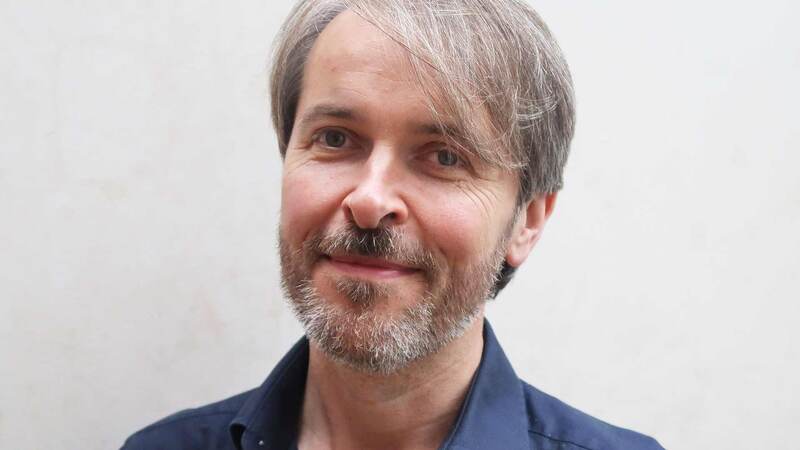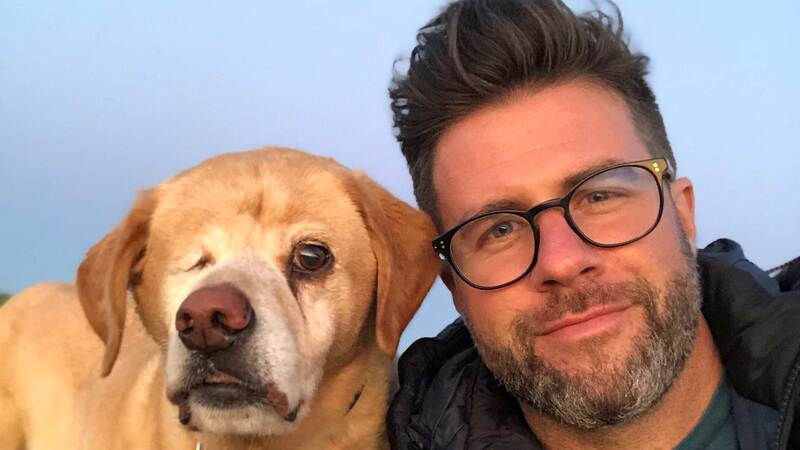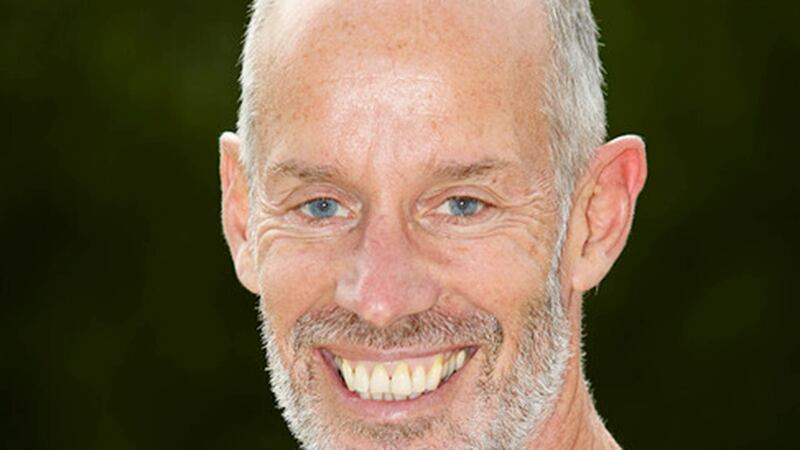You are viewing your 1 free article this month. Login to read more articles.
Ewan Morrison | 'It was the trigger of the pandemic that made me reframe the whole thing'
Ewan Morrison shares how his pandemic prepping tale, How to Survive Everything (Saraband), taps into his past as well as the zeitgeist.
"It had a long birth, but it was the trigger of the pandemic that made me reframe the whole thing.” Ewan Morrison is talking about how his new dystopian novel How to Survive Everything was kept under a rug until it was a granted a new lease of life following the Covid-19 pandemic. The idea came in 2013, following a docudrama Morrison and his wife Emily Ballou wrote for National Geographic, called “American Blackout”. It is an hour-long programme focusing on what would happen if the power grid went down in America.
The novel unfolds in late 2025 and follows the narrative of 15-year-old Haley, as she navigates her father Ed’s advance planning for an upcoming deadly pandemic and the total collapse of civilisation that could result in a large quantity of the world’s population being wiped away. The enthralling narrative—set mostly in a secret hideaway prepared by her father—is intertwined with Haley’s own guide to survivalist thinking, with passages from her father’s “manual for survival”.
I had been walking from one disaster to another with no ambition to be a writer, but then realising that I was one
Morrison’s own upbringing is an influence on the novel. He was raised in Wick, in the north of Scotland, by southern Scottish “anarchist and hippie” parents. His father David was a local librarian and ran the Wick festival of poetry, folk and jazz along with Morrison’s mother, Edna. Involved with the nuclear disarmament campaign as a teenager, Morrison has often talked about being brought up in a utopian cultural life and how problematic this became. “My dad was a really paranoid person, very much caught up in conspiracy theories. In the 1980s, he got involved with a dubious bunch of people called the Scottish National Liberation Army, who turned out to be terrorists. They sent letter-bombs to the Houses of Parliament.”
There are shades of Morrison and his dad in the character of Ed: “My dad also had a persecution complex, we had a fantasy world together.” In fact, the author and his father even built a bunker under the stairs following leaked instruc- tions on how to do it, used in the Campaign for Nuclear Disarmament (CND) in the 1970s and ’80s. “Ed means well but he’s willing to take things to extremes [that] no one sane would probably do. So there’s definitely an eccentric subconscious thing with the paranoid and politi- cally extreme family I grew up with,” Morrison states.
Shifting forms
How to Survive Everything is Morrison’s eighth book, his first with award-winning independent publisher Saraband. He became a full-time writer in 2005, when he released a book of short stories The Last Book You Read: And Other Stories. “I am not one of these people that said, ‘I am going to be a writer’ from the start,” he reflects. “I was bullied as a kid and had a stutter, so I couldn’t speak... I realised I can find my voice by making art.” He made his trajectory from art to writing while attending Glasgow School of Art, where he felt disenchanted about painting and decided to make films instead.
After moving to New York for a big film project, on his return Morrison had an epiphany. “I had to leave a few of my possessions behind and pick what I was going to bring back with me.” Having to choose between his CD players, Hugo Boss suits and stacks of books he bought in America, Morrison picked 45 notepads he had been carrying with him since the age of 15. “I didn’t want to give them away. I realised I had been writing for a long time, but didn’t know it was publishable.” Admitting he still works on notepads, he feels they were a significant part of his journey that led him onto writing his first book of short stories. “I had been walking from one disaster to another with no ambition to be a writer, but then realising that I was one.”
Morrison has been very public about how he uses writ- ing to unravel the utopian and apocalyptic mindset he was brought up with. In 2016, on the 500th anniversary of Thomas More’s book Utopia, Morrison gave a talk at a TEDxOxford event titled “Why we would be happier without utopia”, where he discussed his dad’s dream of Scotland becoming a utopia and the failed utopian ethos behind the family fleeing to the country. How to Survive Everything was inspired by extreme ideologies and the desire to escape from life, as well as the feeling of being an outsider and not fitting in, which Morrison relates to strongly as a result of his childhood stutter and family background. He says: “Recently I thought, ‘Deal with it’. I can write about people who are outsiders. It was a relief to get that out of my system with this book. To confront the ‘weird dad who wants to cut you off from the rest of the world’ phenomenon.” Similar themes have surfaced in Morrison’s previous books, such as 2019’s Nina X, which is based on a cult leader who isolates the characters from the rest of the world. It won the Saltire Society Literary Awards Fiction Book of the Year.
The main catch
As seen in Nina X, Morrison’s protagonists are often complex female characters struggling to make sense of who they are. He describes his latest protagonist Haley as “intelligent” and draws a comparison to J D Salinger’s The Catcher in the Rye’s 16-year-old narrator, Holden Caulfield. Both characters figure out the complexities of the adult world very quickly and “do a pretty good analysis of what adults are like”, according to Morrison. It’s very easy to see the parallels between Morrison’s teenage years and Haley’s situation, too. For example, one of Haley’s biggest weaknesses is her indecisiveness, and Morrison recalls: “I was so indecisive as a teenager, I was just paralysed with indecision. It always seemed to be two sides, and someone would get hurt.” Haley lives through conflicting narratives and faces difficulty making up her mind.
Though he originally wanted to write the book from Ed’s perspective, Morrison changed his mind as he thought Haley’s point of view would be “witty”. Despite the book’s long birth, it was the trigger of the pandemic that made Morrison reframe the narrative, so it became Haley’s idea on how to survive everything. And fascinated by Generation Z, Morrison took inspiration from the language his 19-year-old daughter uses for Haley’s character. Thinking of the world in Haley’s terms and the recent pandemic has helped Morrison grow out of his apocalyptic mindset; “this is the fourth or fifth apocalypse I have lived through, at the age of 50. It’s made me a bit calmer about the human ability to survive panic situations.”
He adds: “I would love to write a sequel... Not to answer any questions, but just because I really miss writing Haley.”
Book extract
To abduct your own children from under the nose of your ex-wife on day one of a supposed pandemic, you will need the following:
1. A sturdy off-road vehicle full of gas, with extra fuel tanks prepared.
2. A well-planned and pre-rehearsed ‘get out of Dodge’ road route.
3. A layered script of falsehoods to hide what’s actually going on.
4. It’s also super-handy if the abduction is on a ‘sleepover’ night.
This is what my dad, the author of his own pandemic survival guide, rather turgidly entitled SURVIVE, had worked out.
It all began at 05:03, on the morning of October 12th. I’m crap with numbers but Dad was obsessed with them. Like: you can survive for three days without water and three weeks without food.









